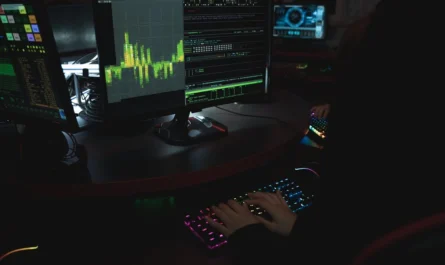More artists are using cloud rendering as a solution for their 3D rendering needs due to the evolving nature of this field. With the ability to harness the power of remote servers, cloud rendering offers a range of advantages. Using cloud rendering can improve 3D artwork by streamlining the process, boosting productivity, and enhancing overall quality.
This article will explore the benefits of cloud rendering for 3D artists. We will explore the benefits that make it a compelling option for artists of all levels and industries. So whether you’re a seasoned professional or just getting started, read on to discover how cloud rendering can help a 3D artist.
Page Contents
What is Cloud Rendering & How Does it Work?

Cloud rendering technology provides a powerful solution for generating professional 3D imagery without the need for expensive hardware, infrastructure, and graphic cards. This is made possible by replacing physical nodes, which serve as rendering engines, with a server or platform known as a render farm.
Using a render farm to create computer-generated images (CGI) involves breaking down the image into frames, which are then calculated independently to speed up the rendering process. Designers can upload 2D and 3D images to an online platform to reference necessary details like lighting, shadows, colors, and textures for rendering. This leads to fast production of high-resolution, realistic renders, requiring less time than local computers.
Thanks to the availability of reliable internet connections, cloud rendering allows users to perform the rendering process remotely. This frees up their workstations to perform other tasks, optimizing virtual creation production. Overall, cloud rendering technology provides an efficient and cost-effective solution for generating professional 3D imagery.
Benefits of Cloud Rendering

Here are the ways cloud rendering is a great choice for 3D artists. Check out the benefits below:
1. Access to High-End Hardware
With cloud rendering, users can access high-performance computing resources to create professional-grade visual effects and graphics quickly and efficiently. With scalability, flexibility, and mobility, cloud rendering offers numerous benefits for professionals in the fields of visual effects and graphic design.
2. Flexible Pricing Options
Cloud rendering offers a cost-effective solution for designers and artists, allowing them to choose the rendering packages or plans that align with their specific design requirements. This not only helps to reduce costs but also makes it easier for professionals to accurately bill their work based on the amount of GHz spent on rendering.
By leveraging cloud rendering, users can optimize their workflow and minimize expenses, making it a popular choice for those seeking budget-friendly options.
3. Scalability
Cloud rendering is highly scalable, making it an ideal solution for growing businesses with fluctuating demand. Users can adjust their computing needs from small to large-scale solutions with just a few clicks, making it attractive for managing multi-level operations.
This feature makes cloud rendering especially valuable for handling unpredictable usage scenarios, solidifying its position as an invaluable platform.
Factors to Consider Before Using Cloud Rendering

Interested in getting cloud render for your work? Here are the factors to consider before investing your money into it.
Cost Considerations
Cloud rendering services have varying initial costs and usage fees depending on the provider. Some services offer flat rates, while others operate on a pay-as-you-go basis. Choosing a billing style that aligns with your usage needs and budget is important.
Users are charged according to their usage of time and resources in a pay-as-you-go system, enabling simple budget management.
Additionally, some services offer the option to set a budget in advance to prevent overuse and unexpected costs. By selecting the right billing style for your needs, you can optimize your costs and maximize the benefits of cloud rendering.
Compatibility with 3D Software
To use cloud rendering for video editing, confirming that the chosen service is compatible with your rendering software and plug-ins is important. It is recommended to select a cloud rendering provider that offers a wide range of software and plug-in support to anticipate future usage needs and avoid compatibility issues.
Opting for a provider with complete support guarantees a smooth and efficient workflow, realizing your creative vision entirely.
Internet Speed and Bandwidth
When utilizing cloud rendering, it is vital to take into account both internet speed and bandwidth since the rendering process involves transferring large files to and from the cloud.
To optimize your performance and productivity, ensure your internet connection meets your service provider’s recommended speed and bandwidth requirements.
By ensuring that these factors are adequate, you can ensure that your cloud rendering experience is efficient and produces high-quality results.
Optimizing Your Workflow for Cloud Rendering

Setting Up Cloud Rendering Accounts
The first step is to create accounts with one or more cloud rendering providers. This typically involves selecting a plan or package that aligns with your specific needs and budget.
Preparing Your Scenes for Cloud Rendering
Ensure your scenes are ready for rendering and optimized before submitting them to the cloud. This may involve optimizing textures, reducing polygon counts, and optimizing lighting and shading settings.
Choosing the Right Cloud Rendering Provider
With so many cloud-rendering service providers accessible, conducting your homework is crucial. And pick one that has the features, functionality, and customer support you require. Factors to consider may include cost, security, scalability, and compatibility with your software and workflow.
Conclusion
In conclusion, cloud rendering offers many benefits for 3D artists and animators. Cloud rendering can streamline workflows and boost productivity by providing access to high-performance hardware, scalability, and cost-effectiveness.
However, factors such as internet speed and compatibility should be considered before choosing a cloud rendering provider.
Summary of Benefits
- Cloud providers typically use the latest hardware technology, such as powerful CPUs, GPUs, and specialized hardware like FPGAs. This allows you to access powerful computing resources that you may not be able to afford or maintain on your own.
- Cloud computing resources are elastic and can be scaled up or down as your needs change. You can quickly raise or decrease your processing power, storage, or other resources according to your workload or business requirements.
- Cloud computing eliminates the need for upfront hardware investments, and you only pay for the resources you use. This makes it easier to budget for your computing needs and can be more cost-effective than purchasing and maintaining your own hardware.
- Cloud service providers have variable price structures, allowing you to select a pricing option that matches your budget. Resources can be purchased on a pay-as-you-go basis or with a set monthly or yearly membership fee.
- Cloud service providers have variable price structures, allowing you to select a pricing option that matches your budget. Resources can be purchased on a pay-as-you-go basis or with a set monthly or yearly membership fee.
Future of Cloud Rendering in 3D Art and Animation
The future of cloud rendering/render farm in 3D art and animation looks promising. As technology continues to advance and demand for high-quality content grows, cloud rendering is becoming an increasingly viable solution. Future developments in performance, efficiency, and scalability are to be anticipated, as well as the introduction of fresh cloud rendering tools and capabilities. As such, cloud rendering will likely continue to play a significant role in the creation of high-quality 3D art and animation.
- The future of cloud rendering in 3D art and animation is promising
- Technology advancements will improve performance, cost-effectiveness, and scalability
- New cloud rendering features and tools will emerge
- Cloud rendering enables remote collaboration and works from any location with an internet connection
- Integration of machine learning and AI technologies will automate many tasks in the rendering process
- Artists will be able to see the outcomes of their labor
- Cloud rendering has the ability to transform the field and open up new avenues for collaboration and innovation among animators and artists.






